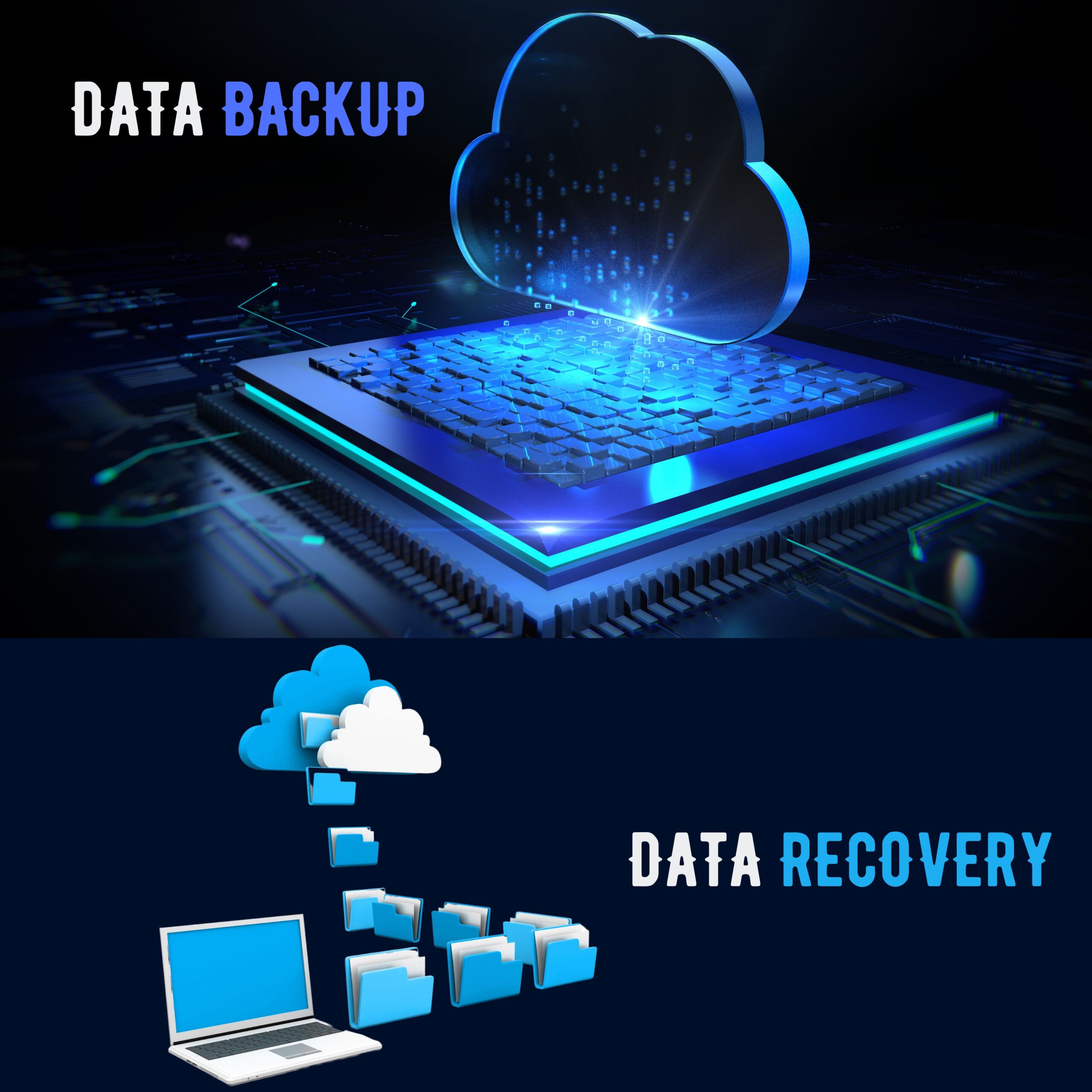Data backup and recovery is an essential process for any business or individual. In the event of a system failure or a data breach, this can help you save important files and restore your system to its original state. It’s essential to understand what it is, how to do it, the advantages and disadvantages, its future, and a conclusion. This blog post will cover everything you need about the technology.
Introduction
Data backup and recovery are essential to any organization’s IT infrastructure. With the increasing reliance on digital data, it is more important than ever to be aware of the importance of data backup and recovery and the many methods available to back up and recover data if it is lost or corrupted. This technology is creating copies of digital data and storing them safely for future use. They should also use the technology to restore data that has been lost or corrupted due to system failure or accidental deletion. There are many different Data Back-ups Methods, such as Cloud, Local, Incremental, Full, and Data Backup Software, as well as Data Recovery Software, Disaster Recovery, Data Backup Plan, Data Backup Frequency, Data Backup Cost, Data Backup Best Practices, Data Recovery Services, Data Recovery Cost, Data Recovery Time, and Data Backup and Recovery Solutions. Understanding these methods and strategies can help you create an effective data backup and recovery plan that will protect your valuable informations in the event of a disaster.
What is data backup and recovery?
Data backup and recovery is creating copies of data and storing them in a separate location for future retrieval. The purpose of the solution is to ensure that should not be lost essential data due to hardware failure, software corruption, human error, or any other unexpected circumstance. Data backups are stored off-site in the cloud or on physical media such as tapes, hard drives, or DVDs.
The main objective of data backup and recovery is to ensure that it can retrieve the same informations during a disaster or an emergency. Additionally, it’s important to maintain multiple copies of backups in various locations so that if one copy becomes corrupted or unusable, you can use another instead. Data recovery should also include verification steps to ensure that it should successfully restore data. Review data backup and recovery periodically. Planning to stay ahead of new threats and technologies should be recommended. Finally, consider automating the processes, as this will save time and energy spent manually backing up data.
Types of Data Backup
There are three main types of backups to consider. These include incremental backup, local backup, and cloud backup.
Incremental Backup:
This type of data backup involves only the data that should change since was completed the last full backup. It helps reduce the time and space needed for a full backup and allows for a quicker recovery in the event of a data loss.
Local Backup:
A local backup is done onsite and on physical hardware such as a hard drive or an external storage device. This type of backup is often used as a primary backup solution, as you can do it quickly and easily.
Cloud Backup:
Cloud backups should transfer data offsite to a secure server. This type of backup is often used for businesses with multiple locations or requiring frequent backups of large amounts of data. Cloud backups provide an added level of security, as data is not stored onsite.
No matter which type of backup you choose, it’s essential to ensure that your data should back up your data regularly to protect your information during a disaster.
How to do data backup and recovery
Data backup and recovery are critical to any organization’s cybersecurity strategy. Without the ability to back up and recover data, organizations risk losing vital data to cyber-attacks, natural disasters, or human error.
When it comes to data backup and recovery, there are several methods and solutions available. Data Backup Methods include Cloud Backup, Local Backup, Incremental Backup, and Full Back up. Software for data backup can automate the backup process and ensure the integrity of your data. Data Recovery Software can help you recover lost or corrupted data quickly and easily. Disaster Recovery solutions can help your organization recover from a major disaster, such as a fire or flood.
Creating a Data Backup Plan is essential in ensuring your data is safe and secure. . Additionally, consider the time and cost associated with Data Recovery Time and Data Recovery Cost.
Finally, several technologies are available can provide comprehensive solutions for your organization’s data backup and recovery needs. These solutions typically include automated backup and recovery processes, advanced security measures, and 24/7 customer support.
By taking the necessary steps to implement an effective plan, you can protect your organization from data loss due to cyber-attacks, natural disasters, or human error.
Advantages and disadvantages
The advantages of this solution are numerous. With a good plan in place, it is possible to recover data quickly and effectively after an unexpected incident, reducing the potential cost and disruption of data loss. Backing regularly also minimizes the chance of experiencing data loss due to human error or system failure. This solution also offer reliable storage options and help protect against cyber-attacks.
The main disadvantage of this technology is the cost associated with implementing and maintaining the solution. It can be expensive to purchase the necessary software and hardware for backing up large amounts of data and the cost of hiring IT personnel to manage the backups. Additionally, there is no guarantee that the data will fully recover the data if it becomes lost or corrupted. Lastly, data backups can take up valuable disk space and consume network resources, reducing performance.
The future of data backup and recovery
As technology advances, so do the methods and solutions available to businesses to protect their data.
Data Backup Methods:
The most commonly used data backup methods include cloud backup, local backup, incremental backup, and full backup. Data backup software can automate these backups and make them easier to manage and monitor.
Data Recovery Software:
In addition to backing up data, companies must also prepare for data recovery in the event of data loss. Data recovery software can help recover lost data from various sources, such as hard drives, servers, and external storage devices.
Disaster Recovery:
Companies need to have a disaster recovery plan that outlines procedures and processes for responding to data loss caused by hardware failure, natural disasters, or malicious activities.
Data Backup Plan:
Every company should have a data backup plan that outlines the frequency of backups, cost of backups, best practices for backups, and recovery options.
Data Backup Cost:
Companies should keep track of their data backup costs to ensure they get the most value.
Data Recovery Services:
In the event of data loss, companies may outsource their data recovery efforts. Companies should research data recovery services to find the most cost-effective option.
Data Recovery Time:
The time it takes to recover lost data depends on the type of data lost and the method used to recover it. Companies should consider this when determining which data recovery services to use.
Data Backup and Recovery Solutions:
Companies should look for solutions that provide comprehensive data backup and recovery services at an affordable cost. Solutions that offer both local and cloud backups are ideal for providing maximum protection for data.
Conclusion
Data backup and recovery are crucial aspects of our digital lives and should not take lightly. The loss of essential data can be devastating, whether it be personal photos, financial records, or business-critical information. By understanding the different types & methods of backups, and software, as well as implementing best practices for disaster recovery and creating a proper plan, we can minimize the risk of data loss and ensure that we can recover our data in the event of a disaster.
However, it’s important to remember that the solution is not just about the technicalities but also the emotional impact of data loss. Losing precious memories, such as family photos, can be heartbreaking. In the same way the failure of essential business data can significantly affect our livelihoods. That’s why it’s so important to take it seriously and to invest in the tools and processes to ensure that our data is protected.
Visit our website to know more!
Follow us on LinkedIn:


